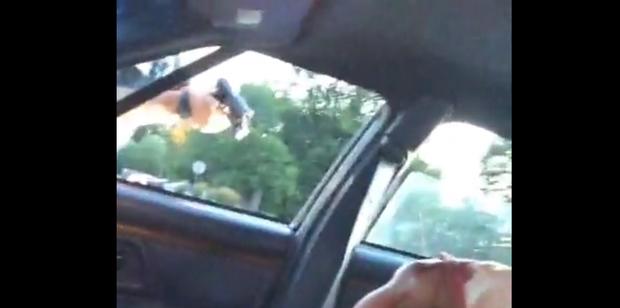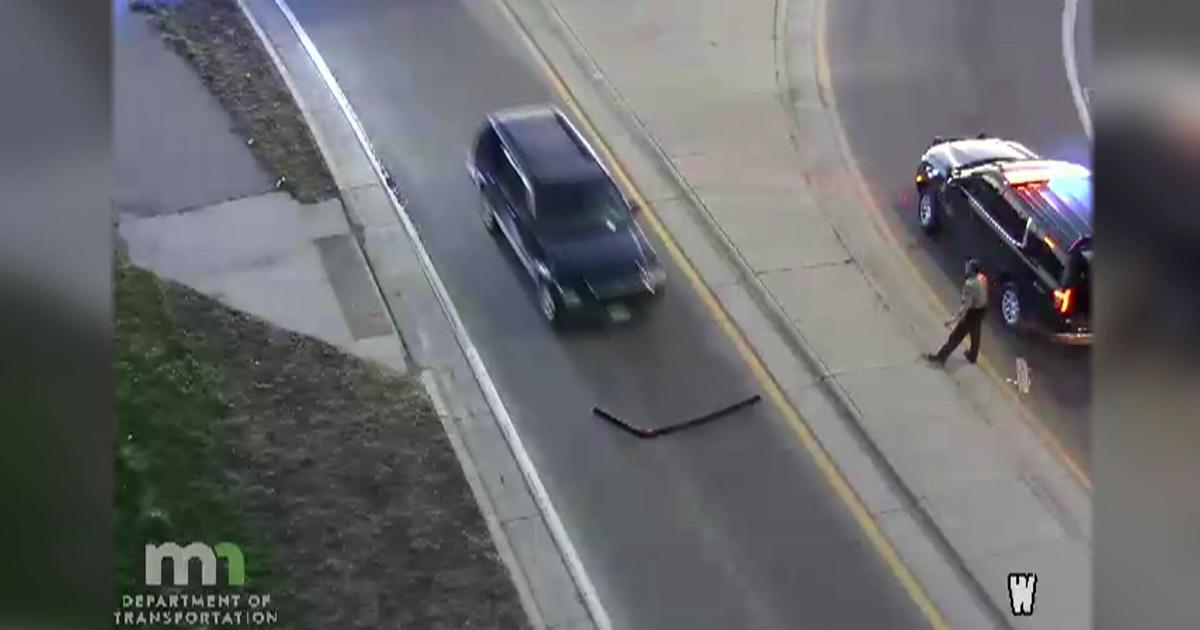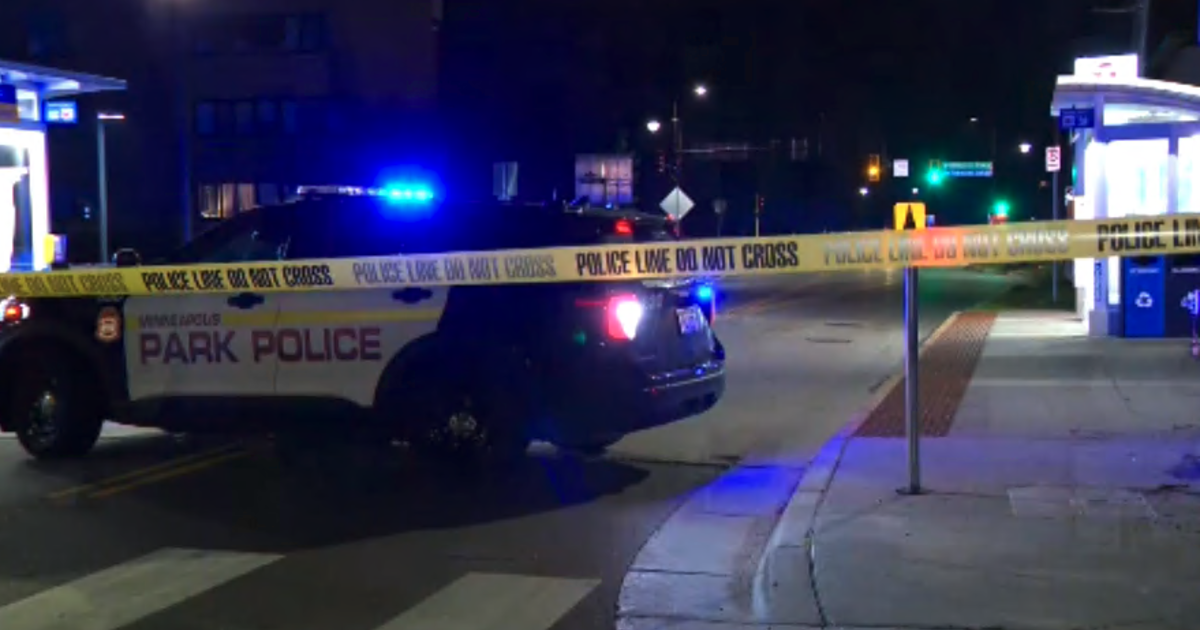Officer Who Shot Philando Castile Charged With Manslaughter
MINNEAPOLIS (WCCO/AP) -- The Ramsey County Attorney's Office has charged the officer who shot and killed Philando Castile in July with second-degree manslaughter.
St. Anthony police officer Jeronimo Yanez shot Castile at the July 6 traffic stop. The aftermath of the fatal shooting was broadcast on Facebook Live by the passenger in Castile's vehicle, his girlfriend Diamond Reynolds.
Castile was 32 years old. He was a cafeteria supervisor at JJ Hill Montessori School in St. Paul.
In a news conference Wednesday morning, Ramsey County Attorney John Choi said that Yanez shot Castile seven times.
Related: Complaint Details Moments Surrounding Castile's Fatal Shooting
His final words were, "I was not reaching for it," referring to the firearm that he and Reynolds told Yanez Castile was carrying. Reynolds said that he had been reaching for his ID.
Yanez's attorney, Tom Kelly, has said Yanez, who is Latino, was reacting to the presence of a gun, and that one reason Yanez pulled Castile over was because he thought he looked like a possible match for an armed robbery suspect. Family members claimed Castile, an elementary school cafeteria worker, was racially profiled.
Choi said that he spent the last 19 weeks studying the case and decided he would not put it to a grand jury.
"My conscience says it would be wrong to ask a grand jury to make this decision," Choi said.
The Ramsey County Attorney also said that the investigation into the incident shows that use of deadly force was not justified.
"Philando Castile was not resisting or fleeing. ... He volunteered in good faith that he had a firearm, beyond what the law requires," Choi said. "Based upon our thorough and exhaustive review of the facts, I have come to the conclusion that there simply was no justification for the use of deadly force by Officer Yanez in this case. No reasonable officer who knew, saw and heard what Officer Yanez did at the time would have used deadly force under these circumstances."
Yanez was also charged with two felony counts of dangerous discharge of a weapon, endangering Reynolds and her 4-year-old daughter, who was in the back seat of the vehicle at the time of the shooting.
Dashboard video from the squad car showing the incident, with audio, will not be immediately released, Choi said.
Choi said he met with Castile's family Tuesday night, and said they were "generally supportive and accepting" of the charges.
St. Paul Public Schools released a statement Wednesday afternoon, saying it continues to grieve for Castile.
Gov. Mark Dayton also reacted to the news Wednesday, saying: "Today's announcement by Ramsey County Attorney John Choi is an important step toward the determination of justice in this awful tragedy. I commend the County Attorney for his careful review; the judicial process must now resolve the proper outcome."
Officer Yanez briefly returned to work on limited duty in mid-August, but that lasted only a week. The city of St. Anthony said it decided to put him back on administrative leave "after reviewing concerns and other feedback from the community."
Yanez will make first court appearance at 1:30 p.m. Friday.
In Minnesota, second-degree manslaughter, or involuntary manslaughter, carries a maximum prison sentence of 10 years.
Related: Timeline Of Events In Philando Castile Case
Castile's death, along with the deaths of other black Americans at the hands of police officers, let to protests and demonstrations around the country, including a weekslong demonstration outside the governor's mansion and one protest that shut down Interstate 94 in St. Paul for hours. The interstate protest resulted in about 50 arrests and injuries to more than 20 officers, after police said they were hit with cement chunks, bottles, rocks and other objects.
The shooting also exposed a disproportionate number of arrests of African-Americans in St. Anthony, Lauderdale and Falcon Heights, which are all patrolled by the St. Anthony Police Department. The Associated Press reported in July that an analysis of police data showed black people made up nearly half of all arrests made by St. Anthony officers in 2016. Census data shows that just 7 percent of residents in the three cities are black.
The fatal shootings of black men and boys by police officers have come under heightened scrutiny since the 2014 death of Michael Brown in Ferguson, Missouri, and led to calls nationwide for officers to be held criminally responsible.
No charges were filed in the death of 18-year-old Brown, who was unarmed, after a grand jury found officer Darren Wilson acted in self-defense. The white officer had said Brown tried to grab his gun during a struggle through the window of the police vehicle and then came toward him threateningly after briefly running away.
Other police shooting deaths also did not result in charges, including the killings of 12-year-old Tamir Rice in 2014 in Cleveland and 24-year-old Jamar Clark last year in Minneapolis. A grand jury determined the white officer who shot Tamir had no way of knowing whether the boy, who was drawing a pellet gun from his waistband, was trying to hand it over or show them it wasn't real.
In the Clark case, prosecutors said the two white officers involved in the shooting feared for their lives when Clark tried to grab an officer's weapon during a struggle.
Officers have been charged in other cases, though. Michael Slager, a white officer in North Charleston, South Carolina, who has since been fired, is currently on trial for murder in the 2015 death of 50-year-old Walter Scott, an unarmed black man who was shot while running from a traffic stop. More recently, Betty Jo Shelby, a white Tulsa, Oklahoma, police officer was charged with first-degree manslaughter in the Sept. 16 shooting of Terence Crutcher, a 40-year-old unarmed black man whose car was stopped in the middle of the road.
When looking at whether to file charges, authorities must determine if the officer believed he or she, or fellow officers, were in danger in the moment the decision is made to shoot. If the fear of danger is deemed reasonable, charges are typically not filed. To prove a serious charge such as murder, prosecutors must also show that the officer was not just reckless, but had ill intentions.
(TM and © Copyright 2016 CBS Radio Inc. and its relevant subsidiaries. CBS RADIO and EYE Logo TM and Copyright 2016 CBS Broadcasting Inc. Used under license. All Rights Reserved.This material may not be published, broadcast, rewritten, or redistributed. The Associated Press contributed to this report.)




